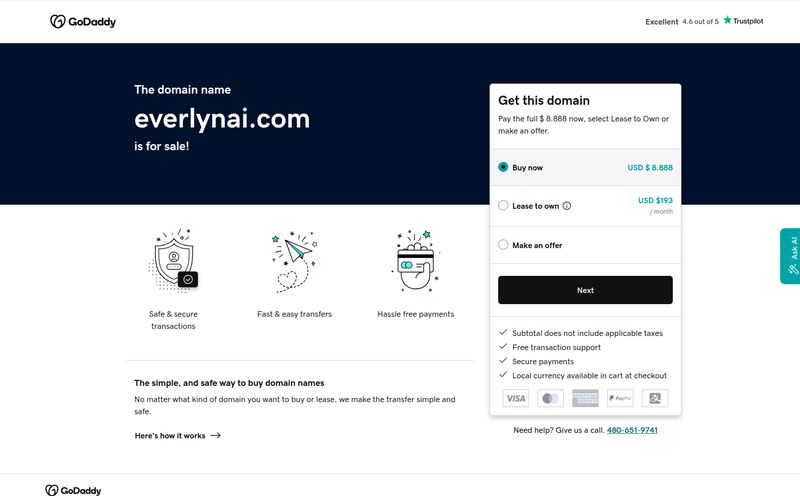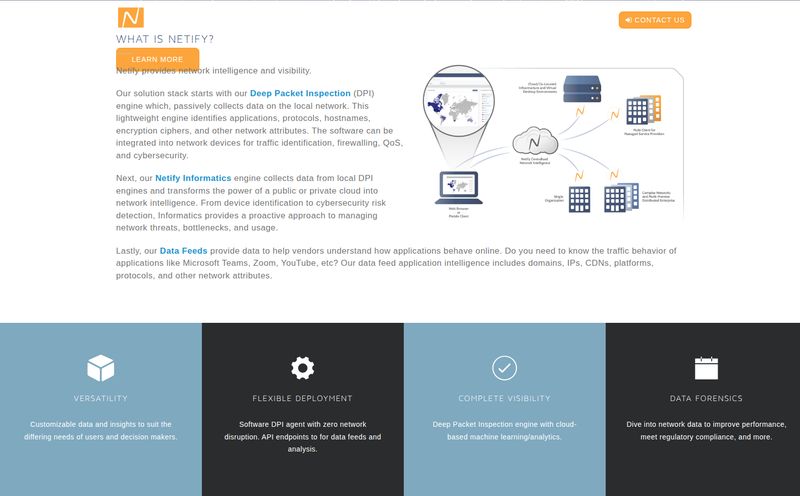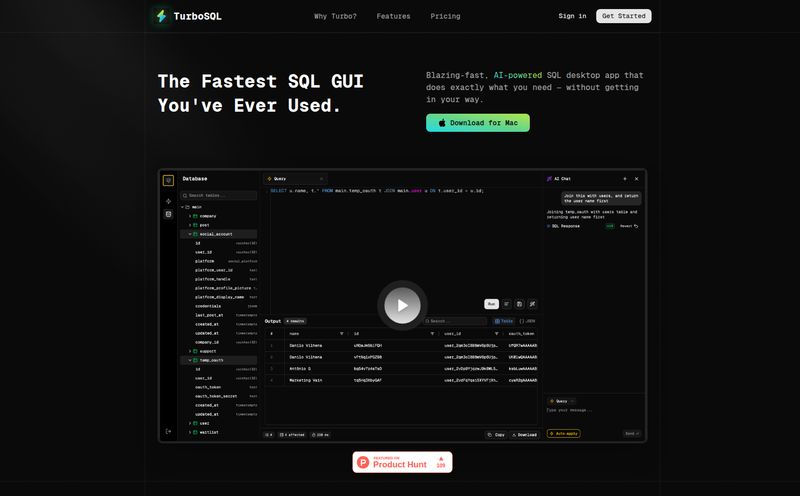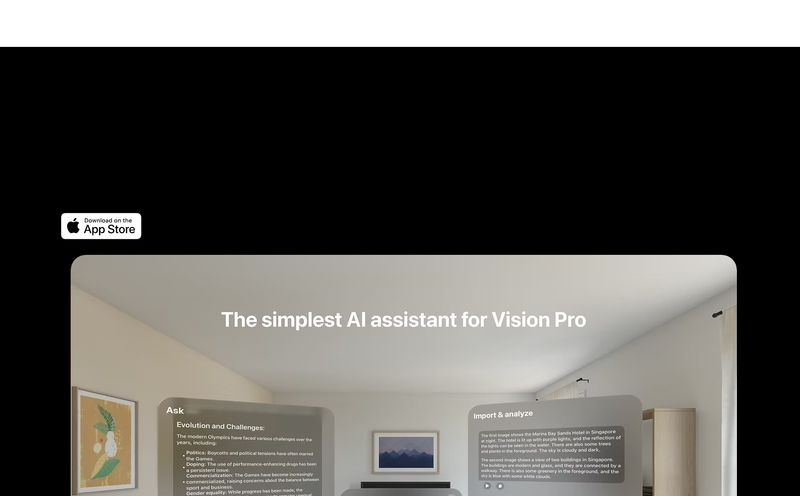How many browser tabs do you have open right now? If you’re an engineer, or work with them, I’m guessing the answer is… a lot. You’ve got Jira in one, GitHub in another, Datadog screaming about a spike, PagerDuty is blinking, and Slack is a constant waterfall of questions. It's organized chaos on a good day, and a productivity-killing nightmare on a bad one.
For years, we've just accepted this as the cost of doing business in a complex, microservice-driven world. We stitch things together with digital duct tape and rely on that one senior engineer who just knows where everything is. It’s tribal knowledge, and it’s fragile.
But what if there was a better way? This is the promise of the Internal Developer Portal, or IDP. And lately, a name I keep hearing in my circles is Rely.io. It’s not just another dashboard; it’s positioned as a central nervous system for your entire engineering org. So, I decided to pop the hood and see if it lives up to the hype.
What Exactly Is Rely.io Trying to Solve?
At its heart, Rely.io is fighting against context switching. It’s the enemy of every developer's flow state. Every time a dev has to jump from one tool to another to find a piece of information—who owns this service? what's its build status? where are the logs?—they lose momentum. It's death by a thousand paper cuts.
Rely.io steps in and says, “Hey, how about we put all that in one place?” It’s an Internal Developer Portal designed to unify your entire engineering stack. Think of it as a single source of truth that connects the dots between your code repositories, your CI/CD pipelines, your monitoring tools, and your project management software. It’s less about replacing these tools and more about giving them a single, intelligent place to talk to each other.
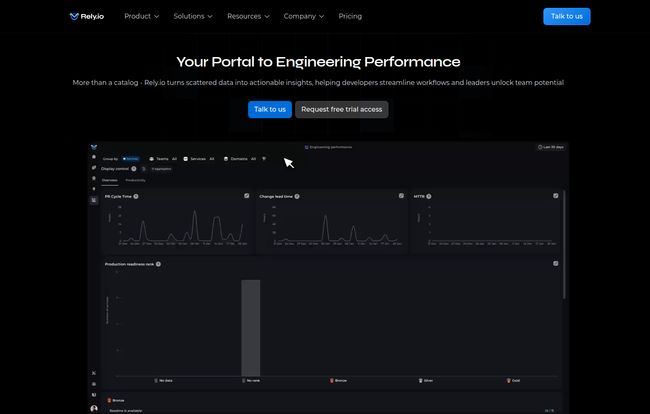
Visit Rely.io
It’s designed to give you automated, up-to-the-minute visibility into your whole software ecosystem. No more outdated wikis or spreadsheets. Just a clean, searchable, and intelligent portal. That last part is important, because this is more than just a fancy catalog.
A Look Under the Hood at Rely.io's Features
So what’s actually in the box? I took a look at their main offerings, and a few things really stood out to me as being more than just buzzwords.
The All-Knowing Software Catalog
This is the foundation of any good IDP. Rely.io’s software catalog automatically discovers and maps out all your services, resources, and dependencies. Forget manually updating a Confluence page that’s obsolete the second you publish it. This thing stays current on its own. It's like having a dynamic Google Maps for your entire software landscape, showing you not just the roads (services) but the real-time traffic (dependencies and performance).
An AI Assistant That Actually Gets It
Okay, I know. Every company on the planet is slapping “AI” onto their products. I'm usually skeptical. But Rely.io’s approach is genuinely interesting. Their AI assistant is trained specifically on the data within your software catalog. This means you can ask it practical questions like, “Who is the on-call for the payments service?” or “Show me the recent deployments for the user-auth API.” It’s not a generic chatbot; it’s a specialized expert on your team's ecosystem. It's a huge step toward automating away the busywork and making institutional knowledge accessible to everyone, not just the veterans. They do note the AI Assistant in Slack is still on the roadmap, which I appreciate the honesty on.
Scorecards and the Gamification of Excellence
Nobody likes top-down mandates. But everyone likes to know how they’re doing. Rely.io uses Scorecards to track engineering best practices and standards. Are services meeting production readiness checklists? Is documentation up to snuff? Instead of a manager nagging people, the system itself provides the visibility. It turns engineering excellence from a chore into a measurable goal. I’ve seen this work wonders in other contexts; a little bit of friendly competition via leaderboards can be a powerful motivator for quality.
The Magic of Developer Self-Service
This one is a big deal for both developers and the platform teams that support them. With developer self-service, engineers can use predefined templates to scaffold new services, set up new cloud resources, or run common operational tasks without having to file a ticket and wait. It’s about empowerment. It frees up your platform engineers from repetitive tasks so they can focus on building the actual platform, and it lets product engineers move faster without hitting roadblocks. A true win-win.
So, Who Is This Actually For? (And Who Should Pass?)
Rely.io seems to be targeting teams that are feeling the growing pains of scale. The fast-growing startups and scaleups (their Pro plan is aimed at 20-50 engineers) who are moving beyond the “everyone knows everything” stage. It's also built for larger enterprises that need serious governance and security controls.
I found this quote on their site from Rodolfo Cristóvão, a Sr. Solutions Architect at Mindera, particularly telling:
"We decided to migrate from Backstage to Rely.io because we believe it’s the only IDP that has the right blend of a solid opinionated product and the flexibility we need. It gives us a great head start, without us adjusting to our organizational specificities. In just a few weeks we already see how it’s a must-have tool for our developers and it will play an important role in our journey to improve our Developer Experience and scale our Software Engineering best practices. I'm very excited about the road ahead!"
That’s a powerful statement. Backstage is the big open-source player in this space, but it requires a ton of dedicated effort to set up and maintain. Rodolfo's point suggests Rely.io offers a faster path to value for teams who’d rather buy than build. It's for the teams that want the benefits of an IDP without taking on a massive internal project.
Of course, it’s not a magic wand. The effectiveness of a tool like this depends entirely on the data it’s fed. Garbage in, garbage out. You'll need to invest some initial effort into the setup and integration. If your processes are a total mess to begin with, this will shine a very bright light on that fact, which can be a good thing, but you have to be ready for it.
Let's Talk Turkey: Rely.io Pricing
Alright, the all-important question: what does it cost? The pricing structure is thankfully pretty straightforward. No need to call a sales rep just to get a ballpark figure, which I always respect.
- Free Trial: They offer a 15-day free trial so you can kick the tires and see if it's a fit for your team. This is a must for any tool in this category.
- Pro Plan: This one costs $35 per user, per month. It’s designed for teams of about 20-50 engineers and includes pretty much all the core features: the software catalog, scorecards, developer self-service, and community support.
- Enterprise Plan: This is a custom pricing model for larger organizations with 50+ engineers. It adds advanced features like enhanced security, beefier admin controls, a dedicated Slack channel for support, and longer data retention.
In my experience, that $35/user/month price point is right in line with other developer-focused SaaS tools. When you calculate the cost of developer time wasted on context switching or fixing issues that could have been prevented, the ROI could be pretty significant.
My Final Verdict: Is Rely.io Worth the Hype?
After digging in, I'm pretty optimistic about what Rely.io is doing. The conversation around Developer Experience (DevEx) is getting louder for a reason—happy, productive engineers build better products, faster. The chaos of modern toolchains is one of the biggest threats to good DevEx.
Rely.io isn't just creating another dashboard. It's building an intelligent layer on top of the tools you already use, focused on tangible outcomes like developer productivity and service ownership. For teams that have considered building an IDP with Backstage but were scared off by the resource commitment, Rely.io seems like a fantastic, opinionated alternative that can get you 80% of the way there in 20% of the time.
It’s a strong contender in a growing and incredibly important market. If your team is spending more time navigating tool sprawl than writing code, you owe it to them to at least take the 15-day trial for a spin.
Frequently Asked Questions about Rely.io
- What is an Internal Developer Portal (IDP)?
- An IDP is a centralized platform that gives engineering teams a single place to access all the tools, services, documentation, and data they need to build, deploy, and manage software. The goal is to streamline workflows and improve developer productivity.
- How is Rely.io different from Spotify's Backstage?
- Backstage is an open-source framework for building your own IDP, which requires significant engineering resources to customize and maintain. Rely.io is a commercial, ready-to-use SaaS platform that offers an opinionated, out-of-the-box solution, aiming for a much faster time-to-value.
- Does Rely.io offer a free trial?
- Yes, Rely.io offers a full-featured 15-day free trial for you to test the platform with your team and see its capabilities firsthand.
- What kind of tools does Rely.io integrate with?
- It integrates with a wide range of essential engineering tools across the SDLC, including code repositories (GitHub, GitLab), CI/CD tools, cloud providers (AWS), observability platforms (Datadog, Sentry), and communication tools (Slack, Jira).
- Is the AI assistant just another ChatGPT wrapper?
- No. The AI Assistant in Rely.io is trained specifically on the metadata and context from your organization's own software catalog. This allows it to provide highly specific and relevant answers about your services, dependencies, and ownership, unlike a generic large language model.
- Who should use the Pro plan vs the Enterprise plan?
- The Pro plan is ideal for growth startups and scaleups (around 20-50 engineers) that need a powerful, ready-to-go IDP. The Enterprise plan is built for larger organizations (50+ engineers) that require advanced security, admin controls, custom integrations, and dedicated support.
Conclusion
The bottom line is that the complexity of our software stacks isn't going down. We can either keep drowning in tabs and tribal knowledge, or we can find smarter ways to work. An Internal Developer Portal is rapidly shifting from a 'nice-to-have' for FAANG companies to a 'need-to-have' for any serious engineering team. If your team is feeling the strain of tool sprawl, it might be time to throw them a life raft. And from what I’ve seen, Rely.io looks like a pretty sturdy one.
